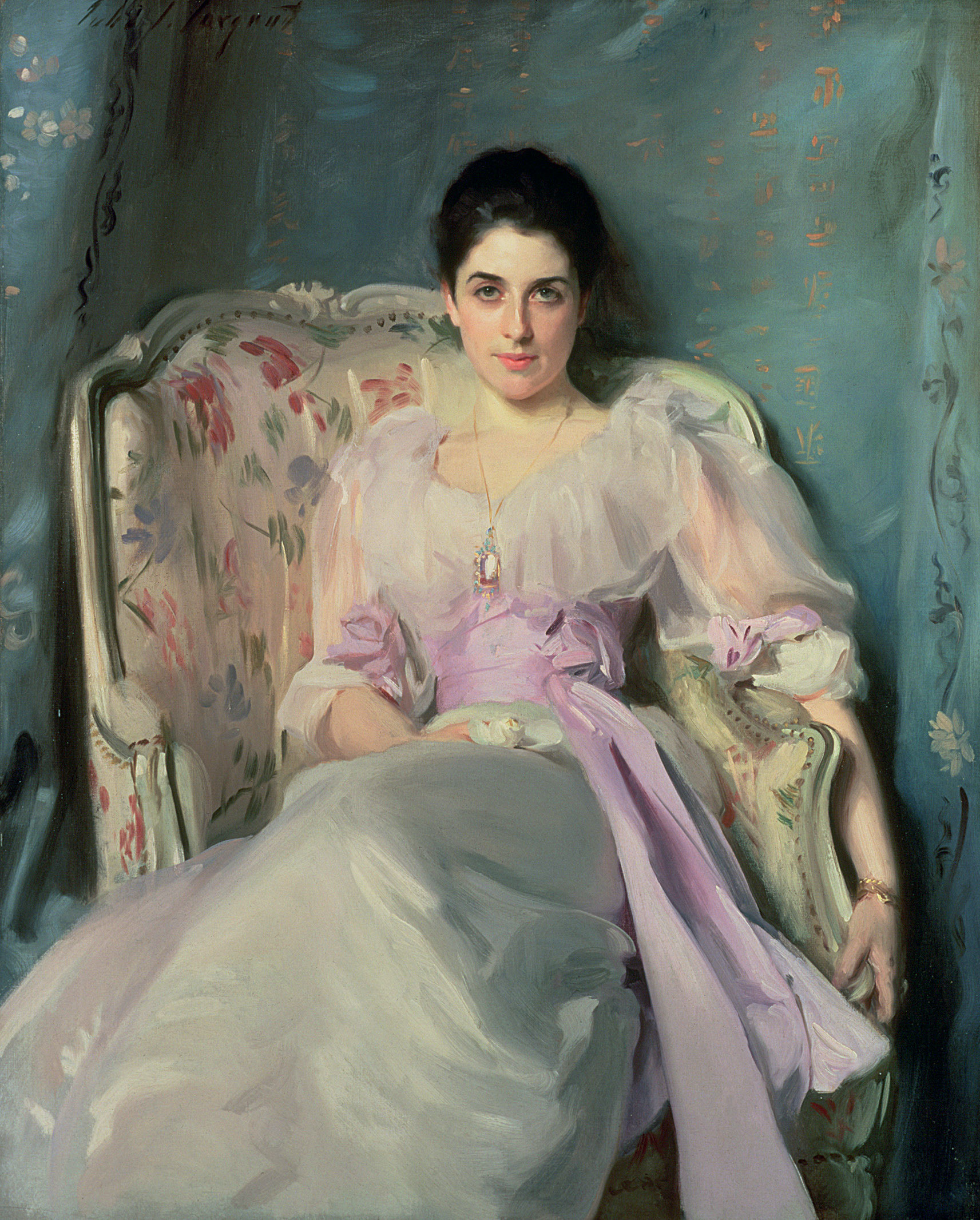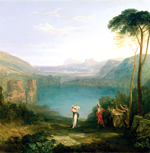My Favourite Painting: Rachel Trevor-Morgan
The Queen's milliner Rachel Trevor-Morgan picks Lady Agnew of Lochnaw by John Singer Sargent.


Rachel Trevor-Morgan on Lady Agnew of Lochnaw by John Singer Sargent
‘I first saw this painting on a trip to Edinburgh when staying with my husband’s family. The impact was immediate: I was struck by Lady Agnew’s languid beauty and the directness of her gaze, fastened on a point above the viewer. Sargent has perfectly replicated the fabrics of her gown; the diaphanous beauty of ivory organza and the sumptuous lilac silk coloured sash; all this in contrast to the heavier embroidered patterns on the chair and darker drape behind and enclosing her.
‘The muted soft colours offset her pale skin and dark hair. In my millinery designs, I am often inspired by colours and mood. If I could translate my hats into a painting, I would aspire to the aesthetic Sargent has captured here.’
Rachel Trevor-Morgan is the founder of her eponymous millinery brand. In 2014, she was granted a Royal Warrant to The Queen.
Charlotte Mullins discusses Lady Agnew of Lochnaw
This mesmerising portrait by John Singer Sargent was painted when Lady Agnew of Lochnaw (born Gertrude Vernon) was 28 years old. When it was exhibited at the Royal Academy of Arts in London in 1893, it was a palpable hit, catapulting its subject into High Society and turning Sargent into the most fashionable portrait artist in Britain.
Sargent hadn’t always known such good fortune. The peripatetic, Italian-born American artist had initially trained in Paris and exhibited at the annual Salon there. But his 1884 portrait of Madame Gautreau, titled Madame X, scandalised French society with its racy déshabillé. Sargent swiftly moved to Britain and began to search out new commissions. One such commission was from the Scottish barrister Sir Andrew Noel Agnew, who asked Sargent to paint his wife.
Lady Agnew of Lochnaw, completed in only six sittings, is a masterclass in portraiture and is painted with great fluidity and confidence. Gertrude sits asymmetrically in a large 18th-century French chair, her left hand assertively curling around the arm in a distant echo of Velázquez’s Pope Innocent X. She could have been dwarfed by such a chair, but, instead, it empowers her like a throne. She wears a white chiffon dress, its diaphanous sleeves emphasising her relaxed pose, her tiny waist cinched in lilac. Her eyes meet ours and linger suggestively, the whites of her eyes visible under her large dark pupils. Sargent finishes off the scene by surrounding her with fashionable Chinese silk wall hangings, their small pale blooms the colour of her almond skin.

Turner and Italy at the National Galleries of Scotland
This new exhibition charts Turner’s love for Italy and the incredible work he produced as a result of the time
Exquisite houses, the beauty of Nature, and how to get the most from your life, straight to your inbox.
Country Life is unlike any other magazine: the only glossy weekly on the newsstand and the only magazine that has been guest-edited by His Majesty The King not once, but twice. It is a celebration of modern rural life and all its diverse joys and pleasures — that was first published in Queen Victoria's Diamond Jubilee year. Our eclectic mixture of witty and informative content — from the most up-to-date property news and commentary and a coveted glimpse inside some of the UK's best houses and gardens, to gardening, the arts and interior design, written by experts in their field — still cannot be found in print or online, anywhere else.
